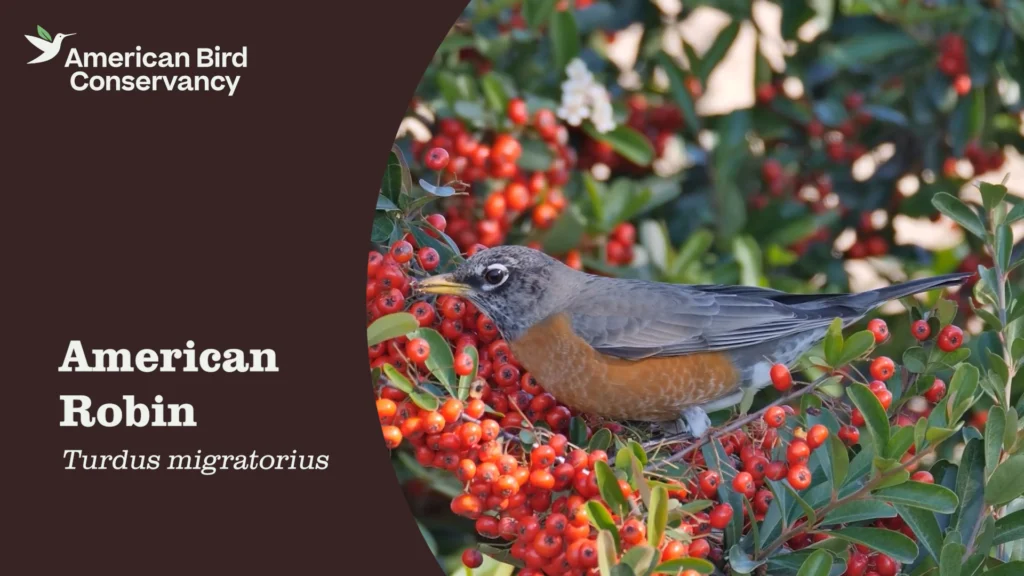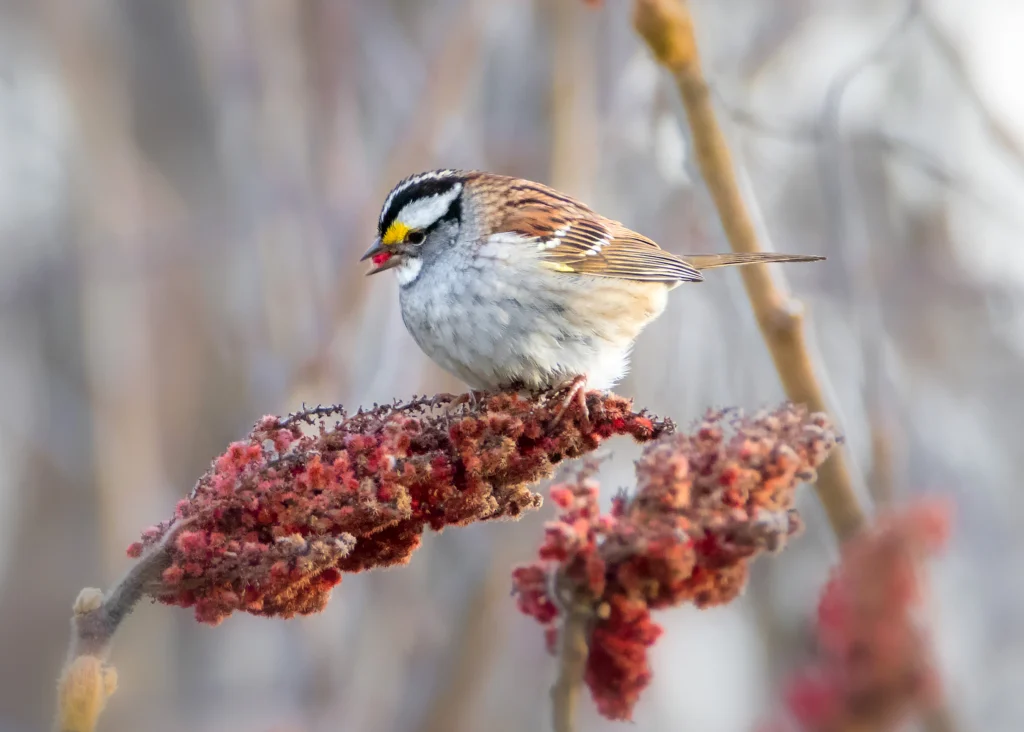Unlike long-distance migrants and many hummingbirds, which head south en masse during the fall, robins react to winter’s onset in two ways.
Many retreat southward. Northern Canada empties of robins, while areas far to the south like Texas and Florida receive large winter flocks. But those making the journey are not lured by warmer temperatures: Robins can withstand extremely cold temperatures, adding warm, downy feathers to their plumage. The real motivation is food, or rather the lack of it. As their warm-weather diet of earthworms and insects wanes, robins begin searching for fresh supplies.
But declining invertebrate numbers aren’t a problem for all robins — and a good number stay up north, which is the second way robins react to winter. They have been observed in every U.S. state (except Hawai’i) and all southern Canadian provinces in January. They’re able to remain thanks to several important adaptations.
First, they change their diet, transitioning from protein-rich invertebrates to vitamin-rich winter fruits and berries, including junipers, hollies, crabapples, and hawthorns.
They also begin moving. In the spring and summer, robins aggressively defend their territories and raise young. In the winter, they become nomadic, searching widely for their favorite cold-weather fare. Weather also influences robin movements. A heavy snowfall that persists for more than a few days may send them on their way, searching for better conditions.
Robins also form flocks in the winter. These flocks, which can number in the hundreds or thousands, stand in contrast to the birds’ territorial pairings in spring and summer. Flocking offers critical benefits: Larger groups mean more eyes and improved chances to spot — and avoid —predators. They also increase the odds of discovering food.
Finally — and this is generally true throughout their range — robins make little noise during winter months. Although some males begin singing toward winter’s end as spring approaches and mating hormones kick in, they typically maintain a subdued presence.
Taken together, these changes dramatically lower robins’ profile in the northern part of their range, making sightings much less common, and leading some people to assume they are absent.










